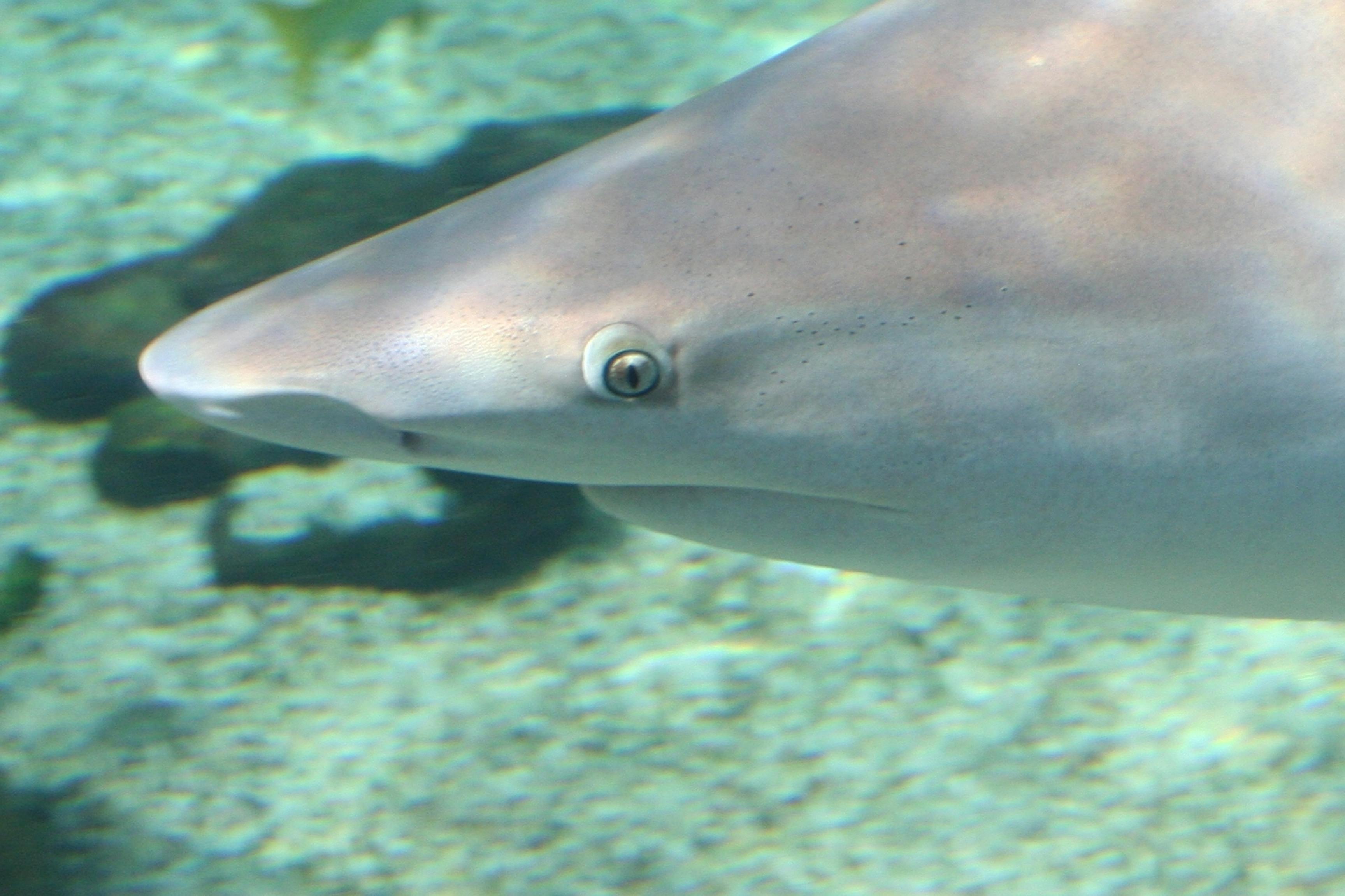
As evening falls on the tropical Atlantic coast, groups of greyish-brown sharks appear just below the water’s surface. These blacktip sharks take advantage of the large schools of fish as a swimming buffet. But due to the warming of the sea water, the bleaching of coral reefs and intensive fishing, the scales are tipping against the blacktip shark. Discover everything about this vulnerable predator here.
Carcharhinus limbatus

23 years
Up to 286 centimetres
Up to 120 kilograms
Blacktip sharks are – unsurprisingly – recognisable by the black tips on all their fins, except their tail fin. Although they mainly use their powerful tail to swim fast, they are also capable of leaping out of the water in a spectacular spinning jump. No one knows why they do this.
Blacktip sharks should not be confused with blacknose sharks, which have black noses. Blacktip reef sharks also look very similar to blacktip sharks. Can you spot the differences?
Blacktip sharks naturally swim in temperate and tropical seas around the world. They live fairly close to the coast and usually do not dive deeper than 30 metres. They are also found in mangrove forests, floodplains and coral reefs. They give birth to their young close to the coast so that they are not eaten.

The blacktip shark's diet consists mainly of fish. They hunt mainly in groups for large schools of herring, mackerel and sardines. Smaller sharks and rays are also not safe from the jaws of the blacktip shark. In addition, this predator scours the reefs and mangrove roots for crabs and lobsters. Finally, the blacktip shark is not averse to squid.
Blacktip sharks hunt mainly at dusk. They use their excellent sense of smell and the electroreceptors in their snout to track down prey in the dark.

Blacktip sharks sometimes form large schools that migrate along the coast in search of food. In a sense, they are migratory fish: for example, the blacktip sharks that live off the coast of Florida swim northwards at the end of winter, along the American east coast. Swimming in large groups offers extra protection against larger predators.

Many things are still unknown about shark mate selection. But mating among sharks is often rough. The male sometimes bites onto the female to prevent the two from drifting apart. Using his so-called claspers around his genitals, the male deposits his sperm into the female.
Female blacktip sharks reproduce once every two years.

Blacktip sharks are viviparous sharks. This means that they do not lay eggs. Instead, their yolk sacs hatch inside the mother's body. After 10 to 12 months, she gives birth to the young sharks in shallow coastal waters. At that point, the sharks are 38 to 72 centimetres long.
Young blacktip sharks are immediately left to fend for themselves. The mother leaves them immediately after birth. Fortunately, the little cartilaginous fish are already equipped with razor-sharp teeth. From birth, they are built to hunt.

Blacktip sharks are large predators and therefore high up in the food chain. The only animals that pose a significant threat are larger sharks, such as the bull shark, tiger shark and great hammerhead shark. Young animals are also preyed upon by smaller sharks and marine mammals. By staying close to the coast, where large sharks find it more difficult to manoeuvre, blacktip sharks remain safe from larger jaws.

In many different places around the world, such as southern China, West Africa and America, the pressure of intensive fishing is increasing. This not only causes prey animals to disappear: the blacktip shark itself also ends up in fishing nets. In many cases, this is bycatch and the fishermen throw the shark back, but often the animal does not survive.
In addition, the coastal areas where the shark lives are under pressure. As seawater warms and acidifies, the coral reefs where this predator hunts are disappearing. Mangrove forests are also under pressure from deforestation. This also means that the safe areas for young sharks to grow up are disappearing.
For all these reasons, experts classify the blacktip shark as “Vulnerable”. The species is still relatively common, but something clearly needs to be done to prevent the number of sharks from taking a deeper dive.

For €2.50 you can contribute to a healthy meal for the blacktip shark.

For €5 you contribute to a better environment for the blacktip shark.

For €10 you contribute to education about the blacktip shark

